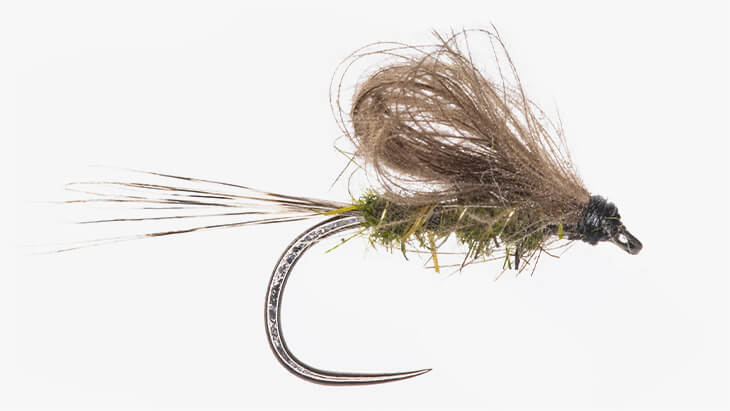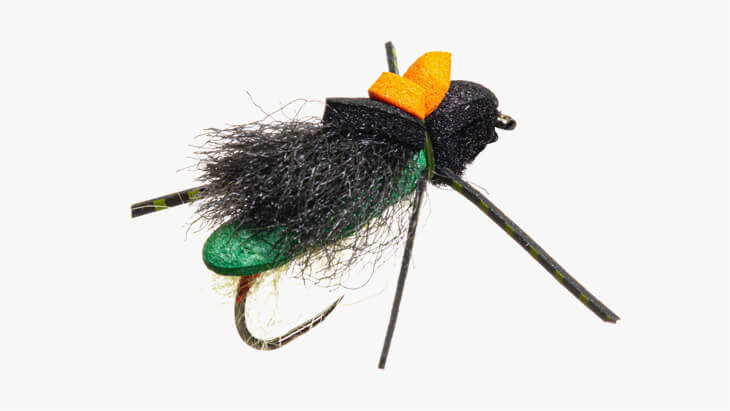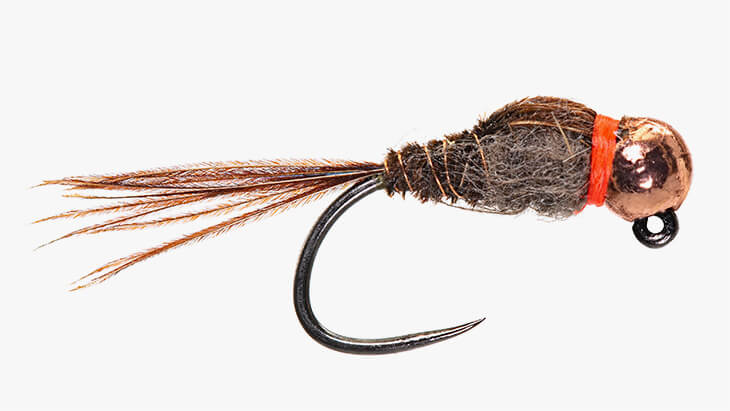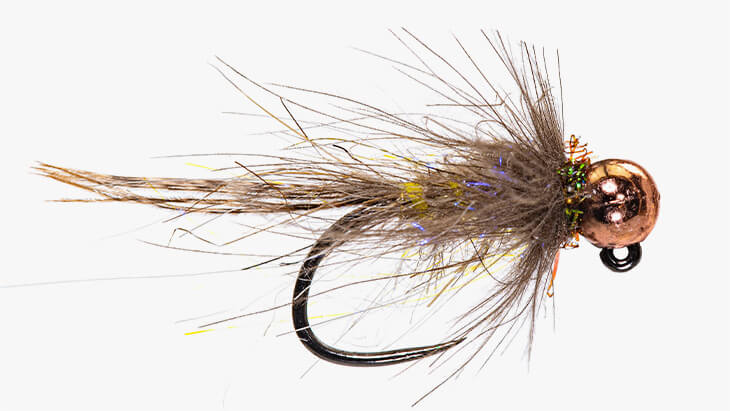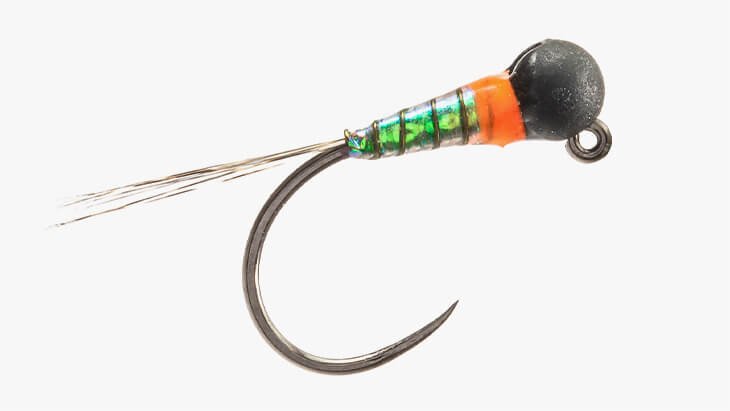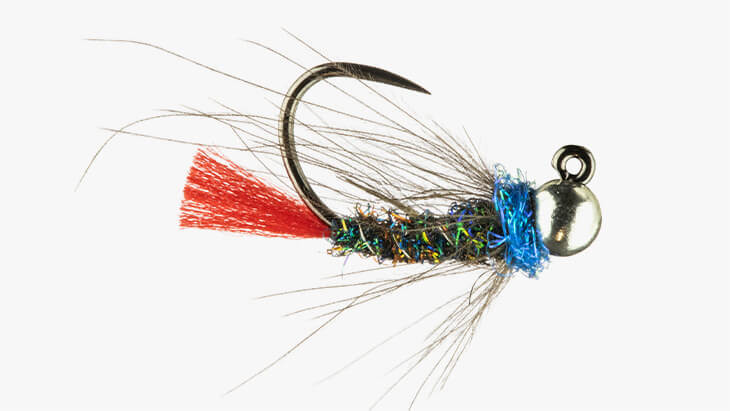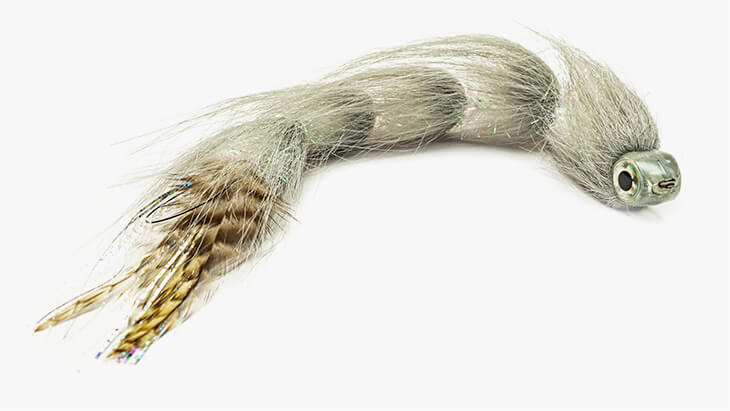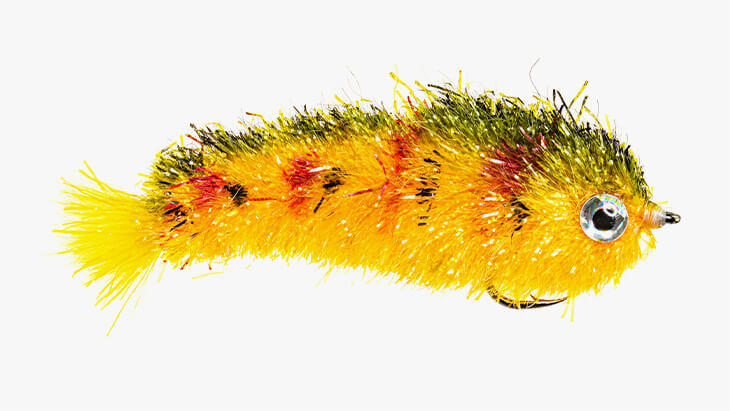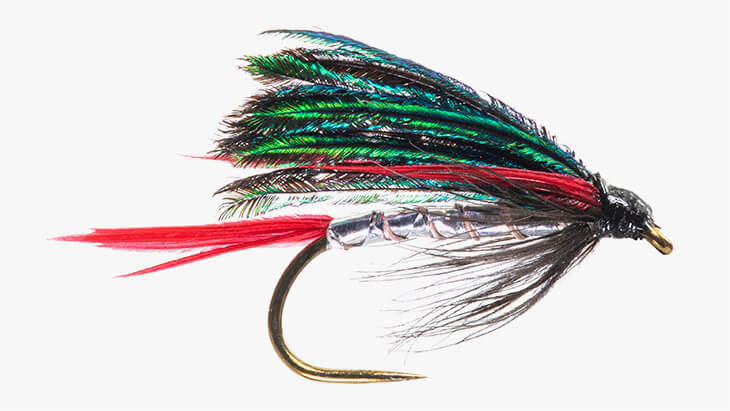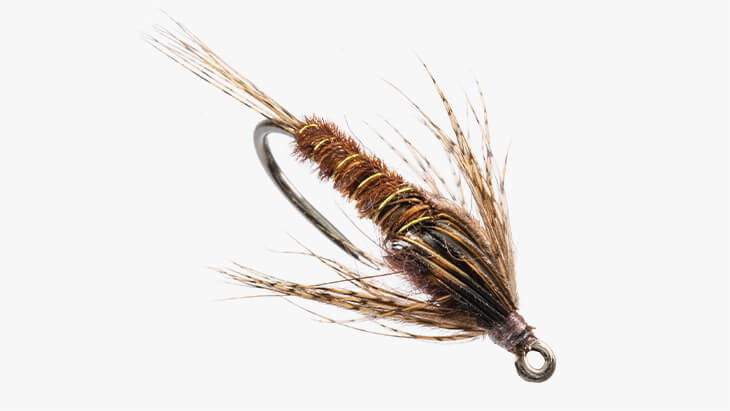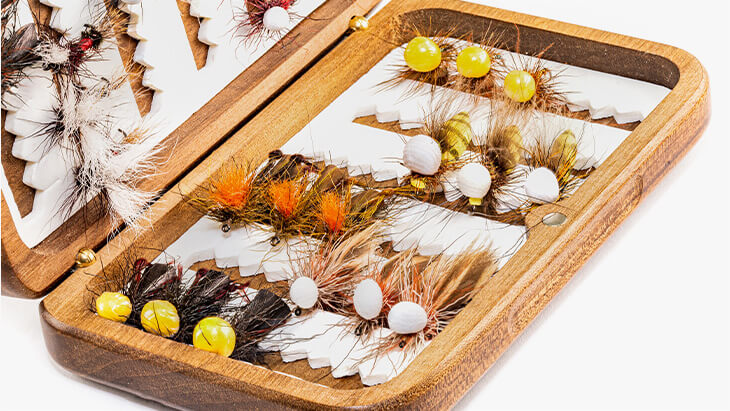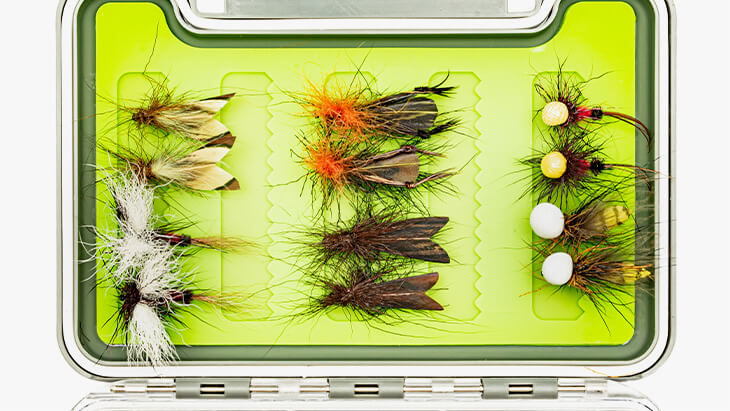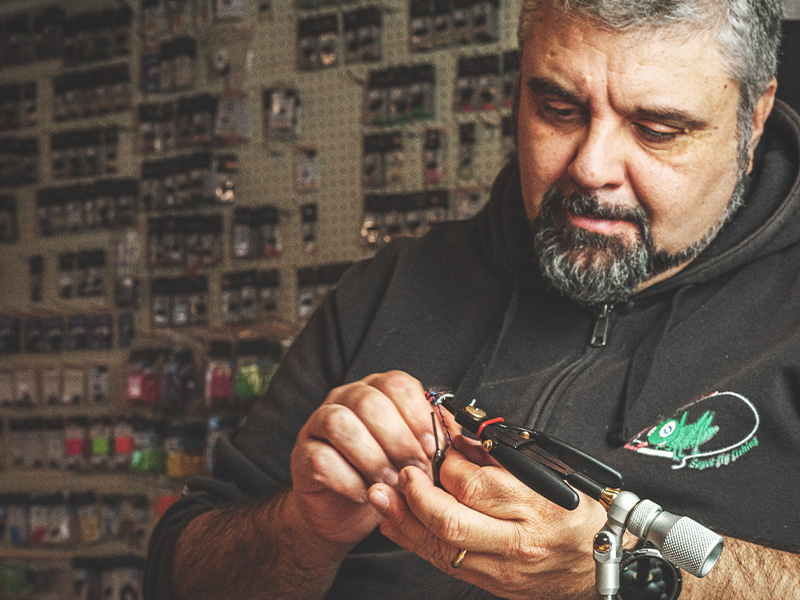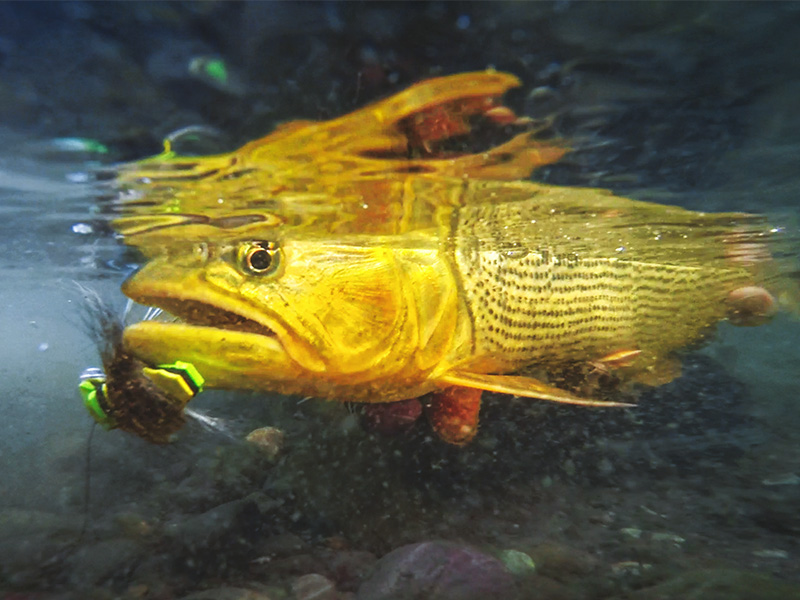FLY FISHING FOR BEGINNERS: THE GUIDE FOR BEGINNERS
Fly fishing is all the rage. More and more people are becoming enthusiastic about this type of fishing. The fact that this veritable boom is far more than a hip flash in the pan is shown by the impressive growth that even Covid could not stop. On the contrary, suddenly a lot of people wanted to spend their free time outdoors in nature. Fly fishing is ideal for this, of course. You get up close with the waters and the animals that live in them. You literally dive into a new habitat. And that's what makes fly fishing so appealing. Because fly fishing is not just about catching as many or as big fish as possible in as short a time as possible. Rather, fly fishing is a contemplative way of approaching nature and the fish.
But it is not only newcomers who are inspired by fly fishing. Many anglers who have been fishing with other methods and techniques for years are also captivated by fly fishing when they see how successful fly fishing can be.
However, taking up fly fishing is also a very conscious decision in favour of a very gentle and fair fishing method. Protected or spared fish species or fish that have not yet reached the minimum size can easily be released from the hook - especially if it is barbless - and returned to their element largely unharmed.
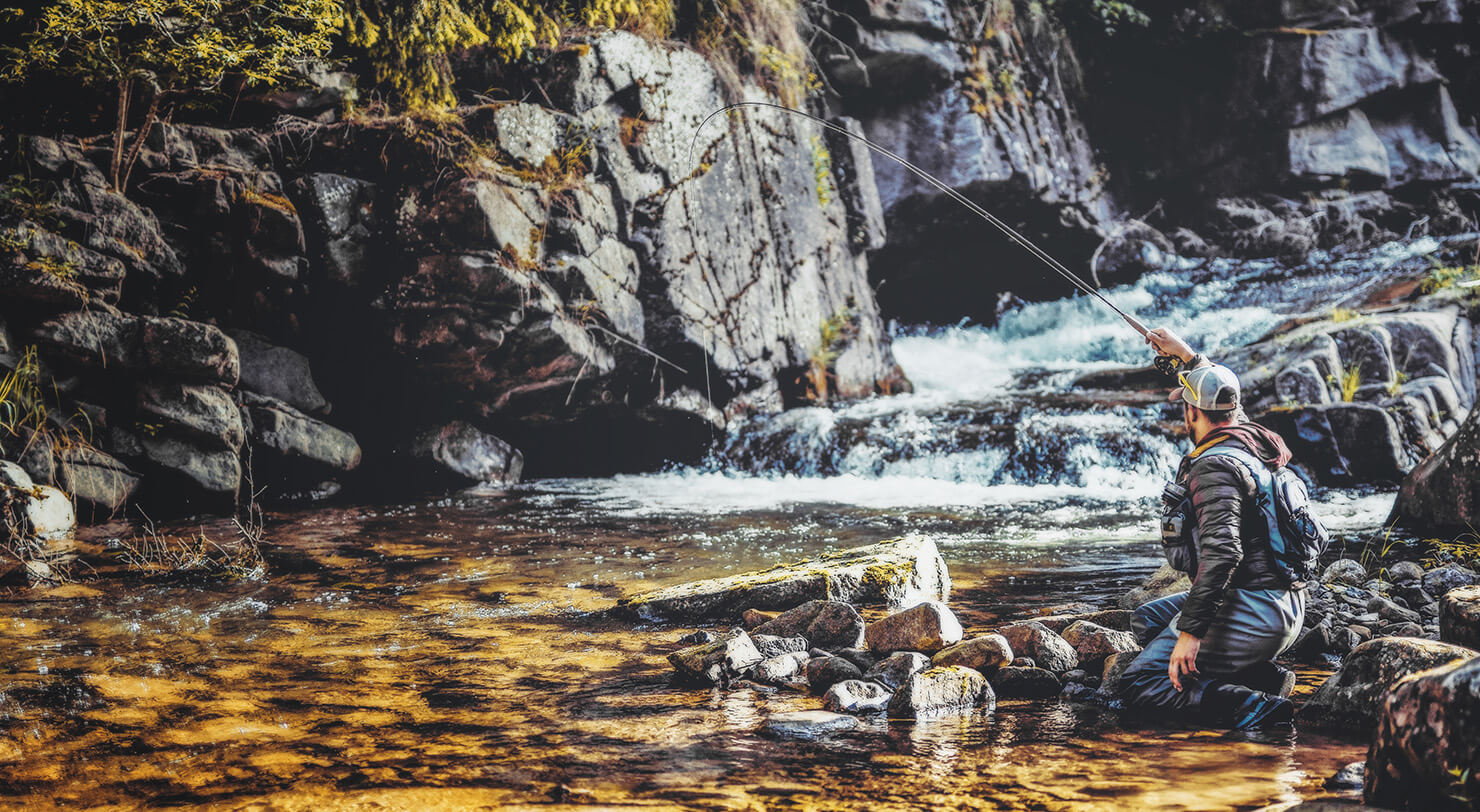
A trout took the fly in front of an impressive natural backdrop - fly fishing can be so beautiful
CONTENT:
Are you also fascinated by this elegant fishing method and would like to learn fly fishing? Great, because in our humble opinion, fly fishing is the most beautiful thing in the world! You would like to try it yourself, but you have read or heard somewhere that especially casting is not that easy? To dispel these myths and misunderstandings right away: anyone can fly fish! And anyone can learn to cast a fly! Just as you can learn to ride a bike or swim, you can learn to fish and cast a fly. The only difference: fly fishing is certainly easier than cycling or swimming. After just a few hours of practice, you will master the basic casts and be able to present the artificial fly in a promising way. The beauty of fly fishing is that you don't have to be a master caster to catch your first fish on the fly. Much more important than long casts for catching success in fly fishing is a precise presentation and the controlled guidance of your fly.
1. FLY FISHING - WHAT IS IT ACTUALLY?
Fly fishing is often called the supreme discipline of angling. Unfortunately, this is often wrongly misunderstood as an elitist or particularly complicated type of fishing. Let's take a look together at how fly fishing differs from other fishing methods and what makes it so special.
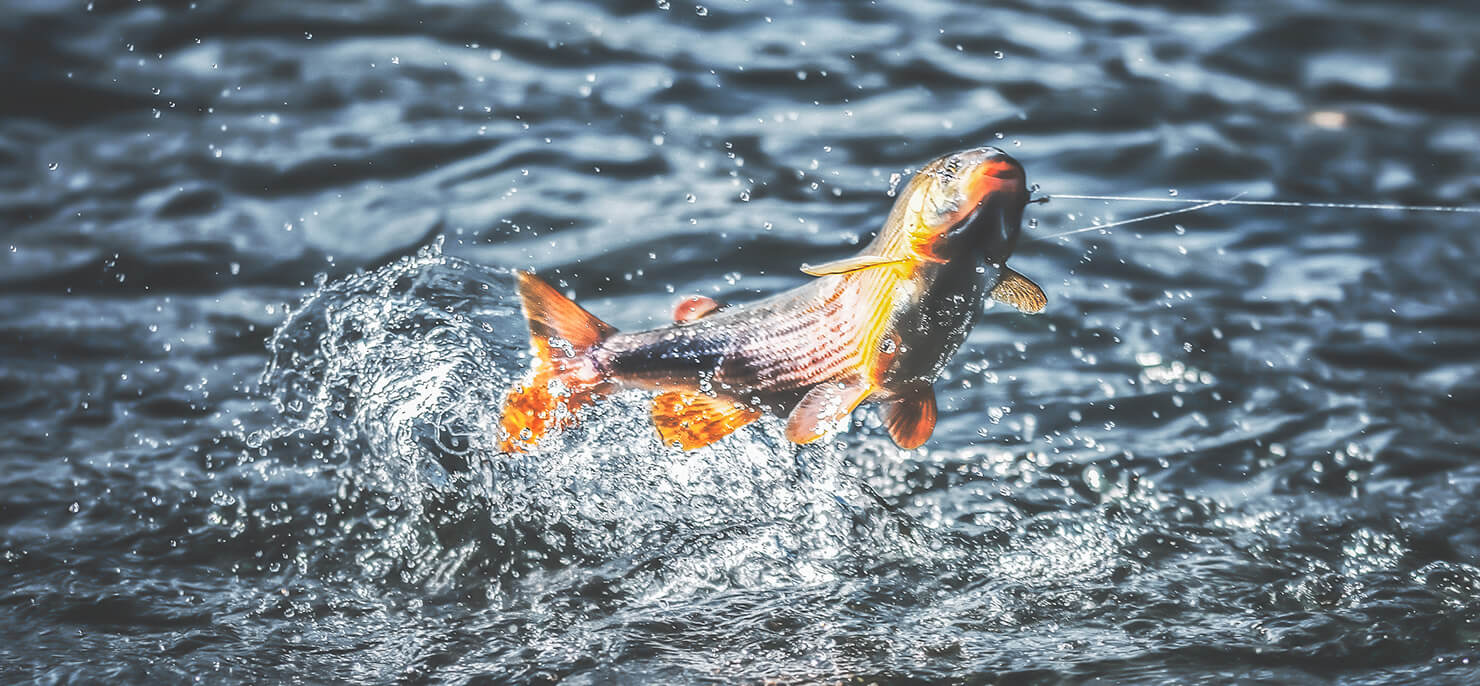
This grayling delivers a spectacular fight - that's pure adrenalin
2. FISHING WITH A FLY?
In fly fishing, or fishing with a fly, a fly is used as bait - as the name already suggests. However, this is not a real fly, but a more or less realistic imitation of an insect. These imitations are created by elaborately tying natural or artificial materials onto a hook.
Even today, tying flies is still purely manual work due to its complexity and (thank goodness!) cannot be replaced by machines, at least not yet. It is amazing what fly patterns can be realised from comparatively simple tying materials. Not for nothing fly tying is described by many as a form of art. And quite rightly so, in our opinion. Many fly fishers also tie their flies themselves. For them it is particularly attractive to be able to outwit the fish with flies they have tied themselves. In this article, however, we want to deal primarily with fly fishing for beginners. If you are interested in fly tying, you will find a very good description with many great pictures and explanatory videos in the corresponding product category of our online shop.
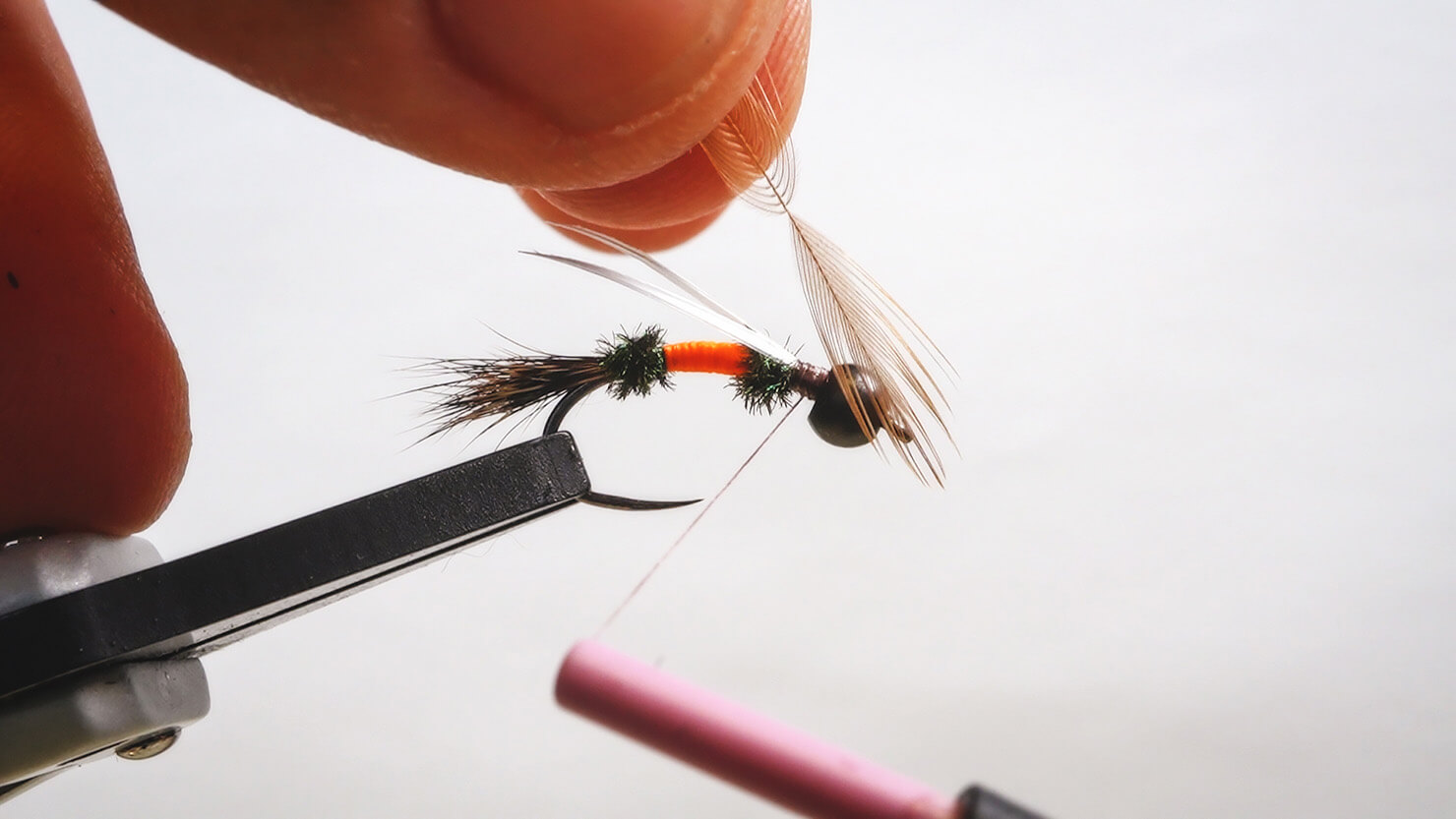
An artificial fly is made from natural and synthetic tying materials. Many fly fishers tie their own flies.
The imitated insects are mostly species that spend some or all of their life stages in or next to the water. Land insects that end up in the water due to a "mishap", such as bees, wasps, ants, caterpillars, beetles, grasshoppers, etc., are also on the fish's menu.
However, fish do not only feed on insects, but also on worms, snails, amphibians and even small mammals such as mice. Many fish also do not shy away from other fish and even their own conspecifics. All these preys can be imitated in the same way. For the sake of simplicity, these patterns are also called flies. In addition, so-called stimulus flies are also very suitable for successfully catching fish. These fly patterns are freely invented and do not imitate any particular prey. Rather, due to different colour stimuli or the silhouette, they exert an attraction on fish which, in the best case, encourage them to take the fly.
3. THE DIFFERENT TECHNIQUES OF FLY FISHING
As different as the replicas of the real insects or prey are, so are the techniques used to present them to the fish as lifelike as possible. And according to these different categories of flies, the individual techniques of fly fishing can also be divided:
3.1. FLY FISHING WITH THE DRY FLY
Fly fishing with the dry fly is the most classic and, in our opinion, also the most exciting and emotional way of fishing with the fly. It involves placing a floating artificial fly as gently as possible on the surface of the water. Since it does not submerge, it remains "dry" - hence the name. The artificial fly should drift on the water as naturally as possible. In this way, it represents an accidental insect for the fish, and thus an easy and tasty prey. The better the imitation resembles the real insect in shape, size and colour, the higher the chances of success.
If you keep noticing small rings on the surface of the water caused by rising fish, this is an unmistakable sign to try your luck with the dry fly. You should present your fly as carefully as possible to the fish that collect insects floating on the surface. It's best to look at the current conditions first and present the fly in such a way that it lands a little above the rising fish. This way the fish will not be spooked, and the artificial fly will drift towards the fish's stand, just like the other real insects. It is particularly important that the fly can drift as naturally as possible. A fly line stretched by the current can pull your artificial fly across the water. The fish will recognise the dizziness and avoid your fly. No rule without exception: Sedges (caddis flies) slither on the water surface when laying eggs. With such patterns, dragging of the fly and the characteristic V-shaped wake is therefore sometimes even desirable. Certain search fly patterns are also sometimes actively fished.
Different dry fly patterns: the imitation of a mayfly as well as a well buoyant beetle imitation.
When casting, the choice of the right stand is also decisive for the success of the catch. If the fly line or leader lands directly on or next to the fish when you present the fly, you will scare it away. Ideally you should cast diagonally upstream. This way the dry fly can drift directly towards the rising fish, while the leader and fly line drift sideways and the fish cannot suspect anything. Take advantage of any cover and keep your movements and silhouette to a minimum. The same applies to wading. You won't catch a startled fish as a rule.
Dry flies imitate insects that have rising from the bottom of the water, hatching from their larval shell and breaking through the water surface to become a flying insect (emerger). However, they can also mimic the adult stage of insects that either settle on the water surface to lay their eggs (imago) or float dead on the water surface with their wings spread after laying their eggs (spent). Dry flies also include swimming search fly patterns and the terrestrial insects mentioned above.
Dry flies can be used to outwit fish, which actively "pick" insects from the water surface. A sudden mass hatch of aquatic insects, e.g., mayflies, which encourages the fish to rise, can make fly fishing with dry flies an unforgettable experience, provided the right fly is tied on. During such a mass hatch, the fish often go into a feeding frenzy and fill their bellies. However, they focus on exactly this one insect that is hatching en masse. All other fly patterns are completely ignored. The challenge in such a spectacle is therefore not so much to fish the rising fish. Rather, you have to convince the fish amidst the abundantly laid table that your imitation is even tastier than the umpteen drifting originals. In other words: match the hatch!
As equipment for fly fishing with the dry fly we recommend, depending on the width of the water, a fly rod between 7.6 and 9 feet long with a fast but progressive action (no tip action), designed for a line class of #3 or #4. We recommend a DT floating line (double taper - tapered on both sides) to facilitate the smoothest possible presentation of the dry fly in clear waters and with shy fish. Alternatively, to achieve longer casting distances but also in windy conditions, a WF (weight forward) floating line may be more appropriate.
A 3 to 5m long tapered leader (whether knotless or knotted) is ideal. It rolls off nicely due to the taper and transmits the casting momentum all the way to the tip. This way you can lay down the dry fly very delicately. Just as if a real insect were landing on the surface of the water. However, as we have already seen, a fully stretched and thus taut leader is not always effective. Often it is more efficient to lay the leader loosely or almost in a "heap". Even if the current pulls on the fly line and the leader, the fly will still drift as naturally as possible for a few moments. Or it stays in calm backwaters, eddies and stream edges for a short time. A few seconds are enough to tempt the fish to take the fly. The tippet should be between 0.12 and 0.16 mm, depending on the visibility of the water, flow speed and expected sizes of the fish. With particularly sceptical fish, few obstacles and a bit of practice in the fight, even less than 0.12 mm.
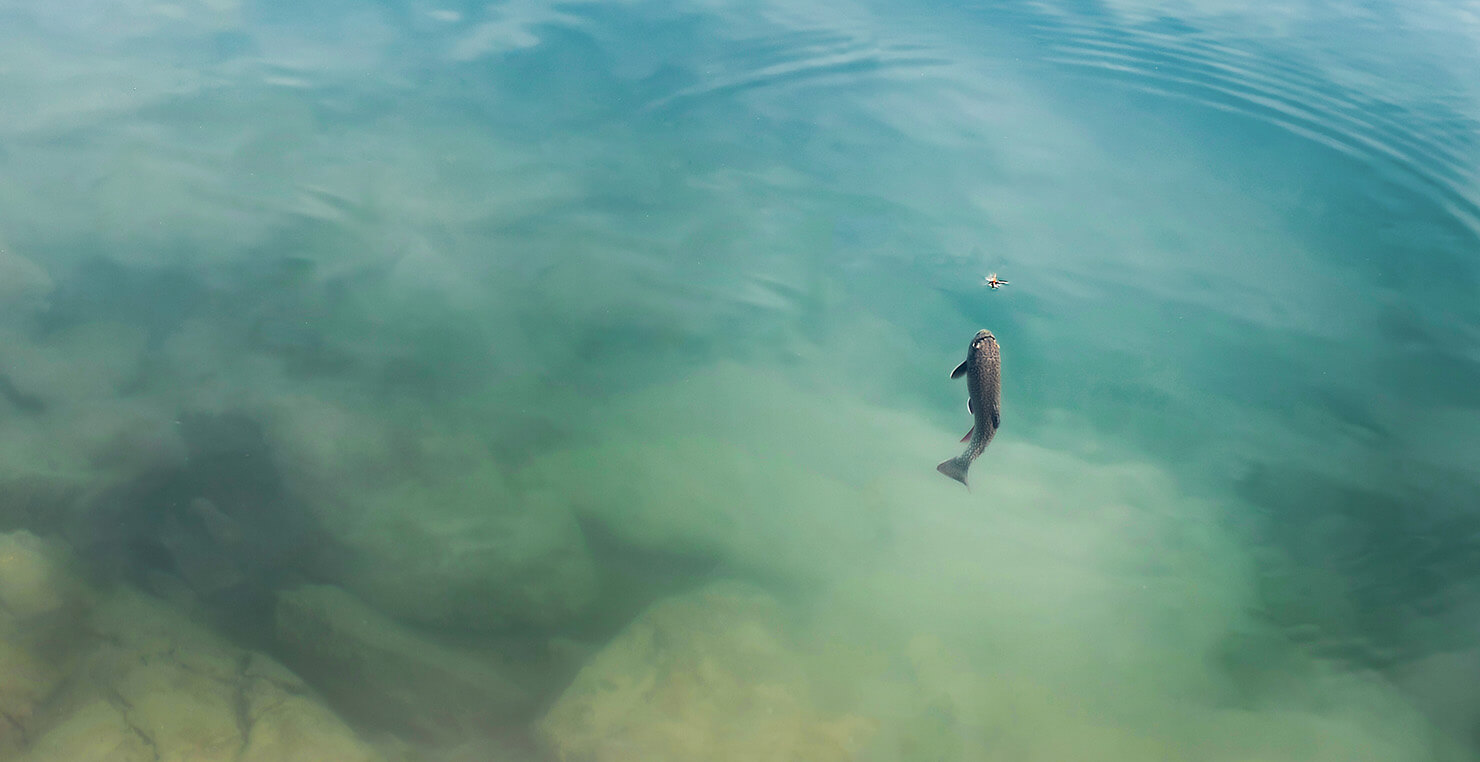
When the water is so clear, the leader must be inconspicuous so that the fish does not suspect anything and takes the fly.
Tip: Trout and grayling cannot only be caught with the dry fly when they are just rising on natural insects during a hatch! From late spring to late autumn, these fish can be animated to rise and take the fly excellently with so called search fly patterns - even if there is no mass hatch of insects in nature at the moment. Especially at the edge of the day, the big fish leave their safe hiding places and go on the prowl. Especially dusk is very promising and can bring you surprisingly nice catches with the dry fly. Prerequisites for success with the search fly are water that is not too deep and a large, bushy, highly visible and very buoyant dry fly (large caddis fly patterns made of deer hair are often very successful). This type of dry fly fishing "appeals" to the energy balance of the fish - no trout can pass up such a big morsel!
3.2. FLY FISHING WITH THE NYMPH
Fly fishing with the nymph is an extremely efficient and successful way of fishing with the fly and is becoming more and more popular. The decline in "mass hatches" of aquatic insects on many waters probably contributes to this. As a result, it can be observed that trout and grayling have changed their feeding habits. They seldom go after hatched insects, but instead pursue the various life stages of the insects as they spend time in the water. During their life cycle, insects can also spend several years in the water, and are thus available to the fish as a food source all year round. It is therefore hardly surprising that fish are often easier to catch with the nymph than with the dry fly.
When fly fishing with the nymph, artificial flies are used, which are supposed to sink more or less quickly in the water column in order to imitate the larval stage of insects, especially at the bottom of the water. These flies are often weighted with a lead wrapping directly on the fly hook and/or a head bead made of brass or tungsten to be able to fish deep water areas successfully. In order to reach the desired water depth quickly, it is important not only to use the weight of the nymph, but also to "mend" the fly line correctly. In this way you avoid the drifting fly line exerting tension on the leader and thus enable the nymph to sink freely and thus faster.
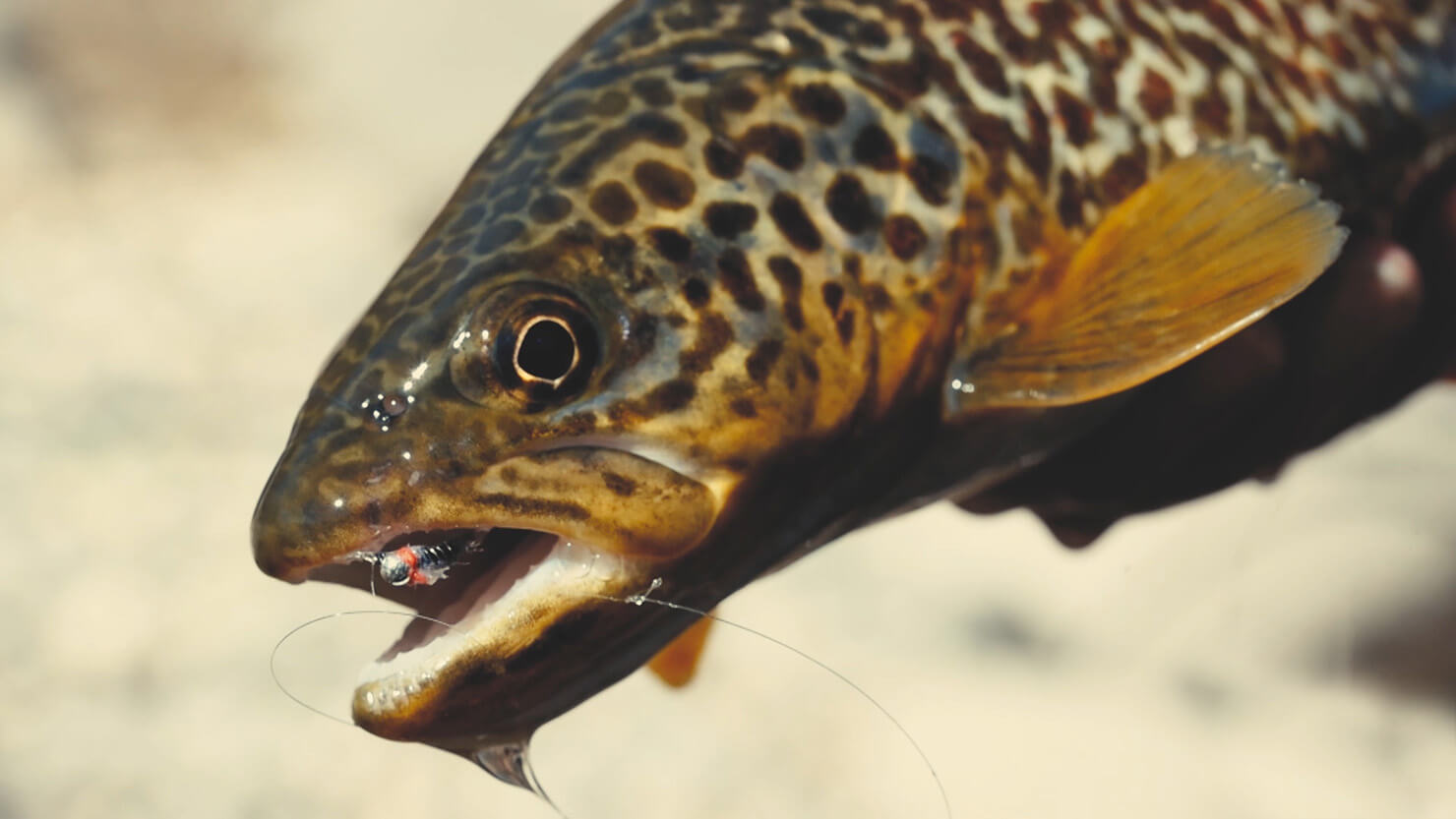
Beautiful trout fooled by a nymph. Nymphs are catchable and effective all year round.
The special techniques used in international fly-fishing competitions have also contributed greatly to the popularity of nymph fishing. Czech nymphing and Polish nymphing were the first of these. However, similar developments have also taken place in other nations with an affinity for angling competitions. Techniques adapted to the local conditions have developed and are called French Nymphing and Spanish Nymphing. For the beginner, the different nuances of the individual techniques and their origins play only a minor role. In fact, the transitions are fluid and through the striving for innovation of professional fly fishers, modern Euro Nymphing has developed from the individual techniques, which has adopted and further developed the advantages of the aforementioned national trends. What all these techniques have in common is that they do without the classic fly line as a casting weight. By definition, however, this is one of the main features of fly fishing. For many traditional fly fishers, Euro Nymhing and its predecessors are therefore not fly fishing in the original sense.
3.2.1. CLASSICAL NYMPH FISHING
For classical fly fishing with the nymph, a slightly longer fly rod with a fast but parabolic or progressive action is generally advantageous. This makes the usual roll casts and special casts for nymph fishing much easier to manage than with a short rod with a tip action. Depending on the width of the water, we recommend a fly rod with a length of 9 or 10 feet, designed for a line class from #4 to #6. A floating fly line with a WF (weight forward) profile is best suited for classic nymph fishing at long distances. At short distances a floating DT line is more suitable.
As a leader, a combination of two fluorocarbon lines of different diameters is ideal, connected with the help of a micro tippet ring (also called a Pitzenbauer ring). Fluorocarbon is almost transparent and, unlike normal monofilament, does not float. The thicker part of the leader is about 1/3 and the thinner about 2/3 of the total length of 3 to 4 metres. Ideal leader combinations are e.g., 0.22 mm + 0.18 mm for fast waters and 0.22mm + 0.16mm for a moderate current. For particularly sceptical trout in moderately fast waters, a combination of 0.20 mm + 0.14 mm is advisable.
Two catchy patterns for classic nymph fishing.
Knotless conical leaders are not ideal for classic nymph fishing because they are very thick at the upper end (0.50 mm and more). The higher the diameter, the higher is the water resistance and thus preventing the nymph from sinking quickly or causing it to move unnaturally fast.
When fly fishing with a nymph, a second, usually smaller and lighter nymph is often tied 50 - 70 cm above the heavier “anchor” nymph, on an 8 - 15 cm short side arm. This so-called "dropper nymph" is often very successful, but not allowed in all fly waters.
A visual aid, also called a bite indicator or strike indicator, is highly recommended for nymph fishing. This will reliably show you even very fine takes. Especially in fast-flowing, turbulent water with many cross currents, bite detection is almost impossible with fly line and leader alone. But especially when fly fishing with a nymph, it is essential to acknowledge every suspected fish contact immediately (!) with a strike (tightening the line is absolutely sufficient because of the fine leader diameters). If you often fish this way with the nymph, you will notice that trout sometimes rise after the bite indicator. In this case it is time to continue fishing with the dry fly ![]()
In classic fly fishing with the nymph, you move upstream, casting slightly sideways upstream. The nymph should sink to the bottom of the water as quickly as possible and drift there as naturally as possible. Due to the friction of the rough water bottom, the current is less there than in the open water. Fish therefore prefer to stay there, as they have to expend less energy there and can still "pick" drifting food out of the current. Therefore, you should offer your nymphs mainly near the bottom and systematically fish this area. Skilful mending of the line is essential to allow long and clean drifts of the nymph at the right depth.
3.2.2. MODERN NYMPH FISHING
Modern nymph fishing in its current form is a product of constant optimisation and innovation, driven by the competitive pressure that prevails in the international fly-fishing competition scene. However, the development of this technique is not finished. There is continuous tinkering with presentation techniques, nymph patterns and product variations in order to gain a minimal advantage over the competition. Fishing efficiency is pushed to the limit in Euro Nymphing, and tradition and convention are not always taken into consideration. In short, he who catches is right.
Due to its very high success rate, this fishing method with the nymph is experiencing a very large influx. This is because many fly fishers in the hobby sector want to benefit from the catchability of this method on the water. Even the interested beginner in fly fishing will very soon come into contact with this technique or at least hear and read about it. Therefore, a closer look at Euro Nymphing makes a lot of sense:
Without exception, longer rods between 9'6'' and 11'6'' are used as fly rods. As already mentioned above, Euro Nymphing does without a classic fly line. Instead, very often extra-long monofilament leaders are used, which can reach up to 12 metres. Alternatively, ultra-thin fly lines with a diameter of 0.55 mm are offered, which are now also prescribed for fly fishing competitions. So that you can still cast your nymphs (usually fished with 2 or more nymphs) to the desired spot, the fly rods are designed for line classes from #2 to #3.
Patterns for Euro Nymphing. Slim nymphs for fast sinking, eye-catching colours and contrasts attract the fish.
The classic casting with forward and backward swing is largely dispensed with in Euro Nymphing. Instead, the nymphs are flicked upstream at the end of the drift in an oval turning movement of the fly rod above the head. The weight of the nymphs is sufficient to serve them with pinpoint accuracy even at distances of around 8 to 10 metres. Further casts are neither necessary nor desirable with this technique. With Euro Nymphing you fish the close range very systematically. Since the lines have practically no weight, there is no slack, and this allow you to stay in direct contact with your nymphs. Therefore, you should not lay the line on the surface of the water so that the current can catch it.
The big advantage of this technique is that the nymphs are guided for a very long time in the area of the water where the fish are. This is usually near the bottom of the water. Above all, this technique gives you unrivalled control over the drift of your nymphs. The lightly stretched line allows you direct contact with the nymph, the extremely sensitive tips of the special fly rods transmit every twitch of the nymph. You can really feel how the nymph jumps over the bottom and hits a stone again and again. This way you can make sure that your nymphs drift even in the "hot zone" and feel even the slightest touch of the shyest fish.
Indicators are also used in Euro nymphing, but these are usually made of highly visible, coloured lines. First and foremost, these are very helpful in keeping track of the exact position and any suspicious movement of your line. The combination of the felt information transmitted from the nymph to the thin line and the rod to your rod hand with the visible behaviour of the indicator allows you to have continuous and absolute control.
Admittedly, Euro Nymphing may not sound very tangible and complex when you first read through it. And yes, a little experience, especially with regard to the water and the preferred locations of the fish, certainly doesn't hurt either. Then again, Euro Nymphing does not require classic fly casting and due to its catchability, even the beginner fly fisherman will catch his first fish very soon.
3.3. FLY FISHING WITH THE STREAMER
Fly fishing with a streamer does not necessarily correspond to the aesthetics of fly fishing with a dry fly. Moreover, streamers do not imitate a fly in the strict sense, but a small fish or similar prey. Therefore, this technique was also viewed rather critically for a long time. Nevertheless, streamer fishing is now well established. Probably also because excellent catches of trophy sized trout, huchen, pike and many other predatory fish in fresh and salt water are possible.
For fly fishing with the streamer, we recommend a fairly stiff fly rod with a length of 9 feet. Since streamers are larger and many models are also weighted, the fly rod should be designed for a higher line class. If you are trying your luck on big trout in larger rivers, a fly rod of line class #6 to #7 is certainly sufficient. With such a rod, you are also well equipped for fly fishing on the coast for sea trout, etc. For pike and other large predators in freshwater, however, the fly rod should at least be designed for line class #8. Depending on the size and weight of the lure or the fly line used (heavy sinking lines to get to depth quickly), however, a fly rod up to class #10 may make sense.
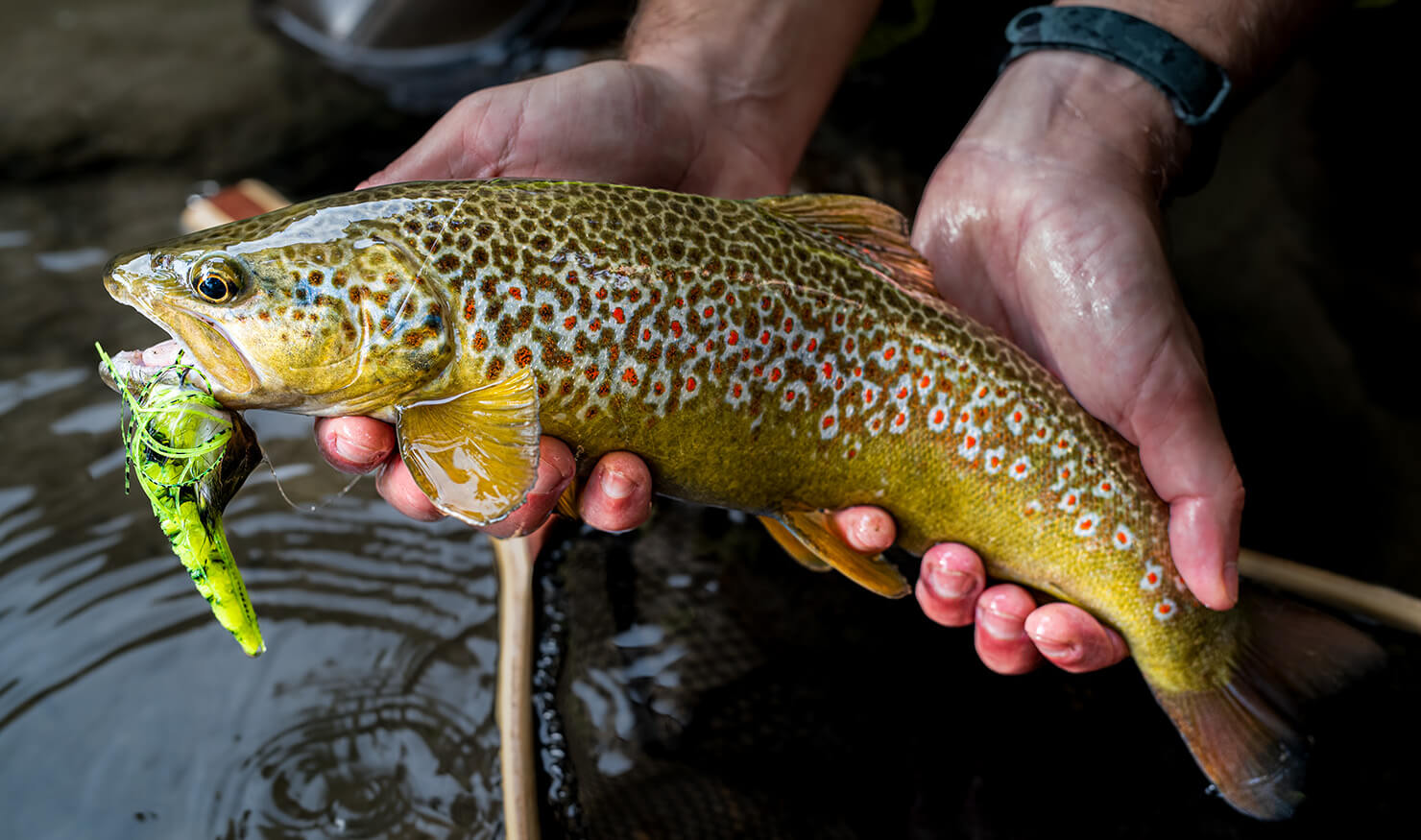
Don't be afraid of big streamers! Even this trout didn't want to miss out on the tidy morsel.
To be able to cast the streamers well and easily, you should use WF (weight forward) fly lines. Due to the weight concentrated in the front part of the line, even larger and heavier streamers can be handled better during the cast. Whether you fish your streamers with pure floating lines or fly lines with sinking properties depends mainly on the depth and current of the water. The shallower and slower the water, the more suitable floating lines are. However, if you need to get to depth quickly, you won't be able to avoid heavy sinking lines. For fly fishing with streamers in medium-sized rivers for big trout, a WF floating line with a sink tip has proven to be the best choice for us. You can quickly adapt to different conditions on the water by adding a polyleader with the desired sink properties or by weighting your leader with tungsten paste, ideally about 50 cm away from the streamer.
The thickness of the leader also depends primarily on the expected size of the fish. A normal monofilament fishing line made of nylon or fluorocarbon is generally suitable as a leader material. For pike and other predatory fish with sharp teeth, however, we strongly recommend using a pike-safe leader. A pike's razor-sharp teeth will cut even strong monofilament lines with ease. You should also choose the length of the leader according to the depth of the water you want to fish and the visibility of the water. If you fish in very shallow and clear water, your leader can be 2 to 2.5 metres long. The deeper you fish and the murkier the water, the shorter the leader can be, and in extreme cases it can be as little as 1 metre. Ideally, you tie the streamer to the leader with a knot that forms an eye, for example the perfection loop or the rapala knot. These knots have a high load-bearing capacity, and the eye does not restrict the lively play of the streamer in the water.
Streamers primarily imitate prey fish. Due to the variety of modern tying materials, there are hardly any limits to creativity.
Unlike fly fishing with a dry fly or a nymph, you move downstream when streamer fishing in the river. You cast the streamer diagonally downstream and let it drift even further and sink during this time. You can also add line after the cast. The streamer starts to work as soon as you tighten the fly line. The current pushes it to your side of the bank. The takes can already come in this swing. You then reel in the streamer by stripping the line with your hand in short tugs and small pauses. Guide the fly line over one or two fingers of your rod hand, so that when the fish takes the streamer, you can block the line by pressing on the rod handle and set the hook. In this blog post we will show you how to reel in the line and set the hook.
3.4. FLY FISHING WITH THE WET FLY
Wet fly fishing is the oldest and most original form of fly fishing. Today, however, this technique is unfortunately no longer used very often when fishing for trout and grayling with a single-handed fly rod. For the sake of completeness, however, we will touch on it in this short introduction to fly fishing for beginners.
The flies resemble the dry fly patterns but are a little sparser tied and with softer tying materials, so that they sink better and more easily into the water. Quite characteristic of the wet flies is the backward pointing wings, which give these fly patterns a streamlined silhouette. Although these flies are fished under the water surface - i.e., wet - they are basically tied unweighted. This makes them move much more briskly. The shape and movement of wet flies imitate rising insect larvae (emergers) or fleeing fish fry. Thus, wet flies are actually direct predecessors of today's much more widespread streamers.
Wet flies are fished in a so-called swing, which is quite similar to the presentation of streamers. Particularly promising spots for the wet fly are long, moderately fast-flowing river runs. There you cast the fly across the current or even slightly upstream to give the comparatively light wet fly enough time to sink during the drift. When your wet fly reaches a promising spot, you stop the free drift by pointing the fly rod slightly upwards and no longer accompanying the drifting fly. The current tightens the fly line and leader so that the wet fly swings on the taut line under the water surface from the opposite side to your side of the water. This is exactly when the bites come.
Two classic wet flies. Once widespread, wet flies are hardly fished today.
This type of fly fishing may no longer be very popular when using the single-handed rod. When fly fishing for salmon and steelhead with the two-handed rod, this exact swing is used. Many classic and timeless salmon and steelhead flies also share the streamlined appearance with wet flies, even though the latter are much smaller and usually not tied as elaborately. However, the topics of fly fishing with a two-handed rod and salmon and steelhead are out of place in this blog article on fly fishing for beginners but are excellent for a future blog post.
4. THE CASTING TECHNIQUE: THE VERY SPECIAL STYLE OF FLY FISHING
The artificial flies used in fly fishing are literally light as a feather. They have no or only a negligible weight, so that they cannot be cast with an ordinary fishing rod and the nylon fishing line normally used for fishing. Even with streamers, the comparatively low weight is not enough to be able to cast the large, bushy lures. In fly fishing, the necessary casting weight is in the fly line to place your artificial fly at a desired location in the water. And this combination of light lure and heavy line requires a very special casting technique. At first glance, casting the fly may look more like swinging a whip. But by moving rhythmically back and forth, the fly line is brought to the desired length in the air and the fly is then gently laid down.
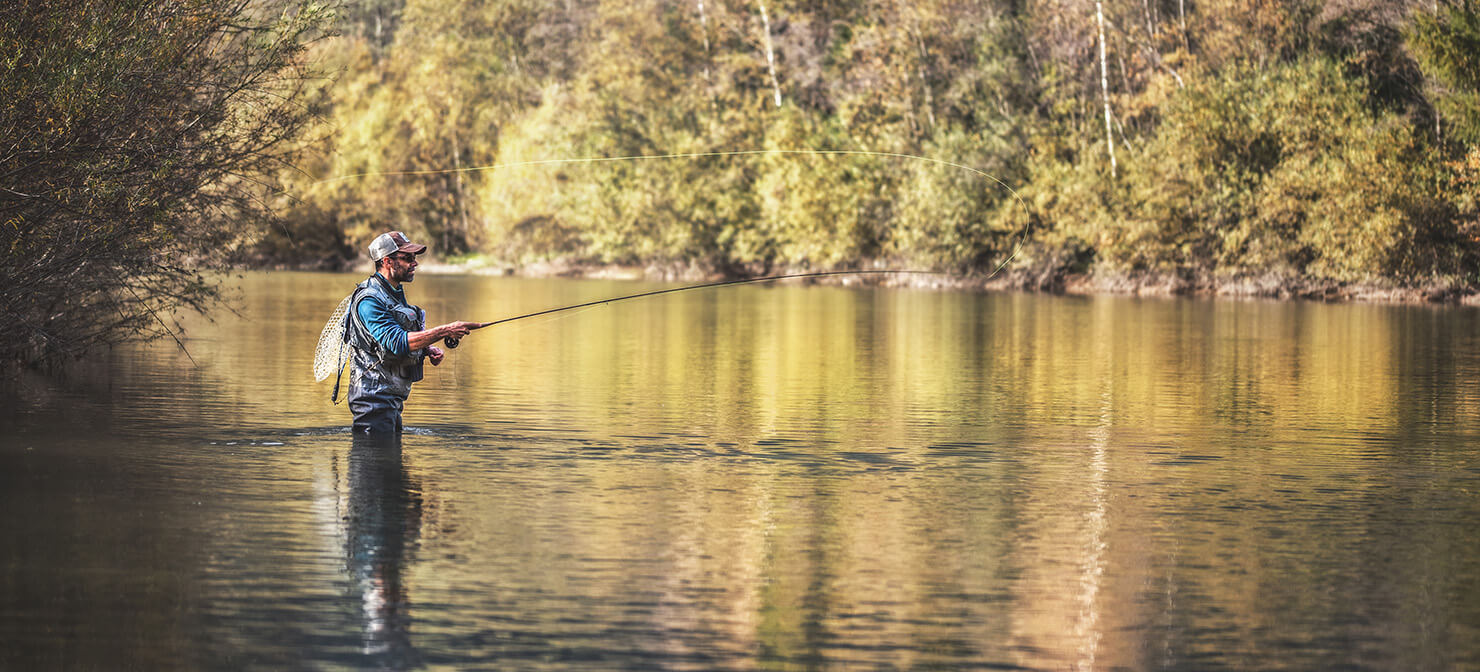
With a little practice, you too will succeed in making such elegant casts when fly fishing.
For a skilled fly fisherman, casting looks very aesthetic and elegant. Fly casting is very much about correct timing and appropriate speed. Force, instead, is not necessary, neither to cast far nor to cast skilfully. On the contrary, using too much force at the wrong moment is counterproductive and will result in a failed cast. Very often the basic movement of the standard cast, where the fly line moves forward and backward above the fly fisherman's head, is compared to a clock. If you look at a fly fisherman from the right side, the rod hand and the rod form a hand of the clock that moves between about 1 o'clock (cast forward) and about 11 o'clock (cast backward). However, this is only a rough approximation, because such a rotating movement of the elbow and/or wrist opens up the cast very much, creates large loops and the casting impulse is lost.
Ideally, you should familiarise yourself with your fly-fishing equipment on a lawn or a body of water with little current or, even better, no current. Sufficient space in front of and behind you makes casting easier. Stand loosely and with a shoulder-width step in front of the casting direction and stand upright so that you can make maximum use of the working area in front of you. Hold the fly rod in your rod hand and the fly line between the reel and the guide ring of the fly rod in your line hand. Pull a few metres (4-5 metres is sufficient in the beginning) of fly line from the reel and lay it stretched out in front of you. A leader (a tapered leader is the easiest to cast) with a small fibre tuft (imitates the fly, without hook!) is attached to the fly line. The tip of the fly rod points away from you diagonally down to the ground. You slowly raise the fly rod and guide it backwards to the side of you. The rod hand starts at about hip height and remains at about the same height as your head, just behind your body axis. Four things are important here:
- You start with a slow movement and gradually increase the speed of your movement.
- The rod reaches its maximum speed just behind your body axis (at about 11 o'clock to stay with the clock symbol).
- At this point the rod stops abruptly and remains in this position without bobbing and without (!!!) bending your wrist. The tip of the rod points backwards and upwards (11 o'clock).
- During the entire movement the tip of your fly rod has moved on an imaginary straight path, i.e. it has taken the shortest way from the starting point to the end point (11 o'clock).
In this way you charge the fly rod (acceleration) and transfer its energy through the sudden stop to the fly line, which has followed the fly rod until now, but now stretches backwards due to the inertia and the energy of the casting impulse.
Wait a moment (about one second – just the time to say “twenty-one”) until the line has stretched backwards and repeat the movement sequence from above for the forward cast:
- Start slowly and move the rod forward, again accelerating steadily.
- Stop abruptly without bobbing or bending the wrist.
- The tip of the rod follows a straight line.
The abrupt stop with the rod tip pointing upwards (1 o'clock) stretches the line forward. If you want to lay the line down, i.e., present the fly, the stop does not need to be so pronounced. You can also stop the movement of the rod further forward (between 2 and 3 o'clock) and accompany the lowering fly line with the rod even after the stop. You extend the casting distance by adding line when the fly line stretches forward and backward during the cast.
Your first casting exercises should be about getting a feel for the fly rod and fly line. Your goal should be to understand how your movements, acceleration and stops affect the casting process. In the beginning it is better to be able to cast decently with less line. Casting distance comes with time and practice. You will also notice that using power does not make you cast further or better but is most likely to make you cramp up.
4.1. A FLY-FISHING LESSON - THE FASTEST WAY TO A CLEAN CAST
Many beginners who want to learn fly fishing are put off by casting. However, like many other things, anyone can easily learn to cast a fly. The quickest and easiest way is certainly to take a fly-fishing lesson. The great advantage of such classes over self-taught practice is the fact that participants in a course learn the technique of casting correctly right from the start. An experienced casting instructor teaches you the right movements, notices small mistakes immediately and helps you to eliminate them. Getting rid of mistakes once they have been learned is usually much more time-consuming than learning to cast the fly correctly from the beginning.
Such fly fishing lessons are usually held over a weekend. In addition to learning how to cast correctly, you can also try out and compare different fly-fishing tackle and find out what suits you best. In addition, the instructor can give you a lot of practical tips and tricks. There are certainly fly-fishing lessons in your area, just ask google for “fly-fishing lessons near me”. With a local instructor, you can also learn more about the local waters, fishing opportunities, the best season and the catchiest flies. We can definitely recommend such a practical fly-fishing class. For an enthusiastic beginner who wants to start fly fishing, it is the ideal introduction. And even advanced fly fishers can always learn a lot during a day with a professional casting instructor.
5. WHAT DO I NEED TO BUY TO START FLY FISHING?
We hear these or similar questions again and again when we are approached by interested beginners who want to start fly fishing. The good news: fly fishing is not an expensive hobby. With just a few hundred euros, you can get high-quality fly-fishing equipment with which you can catch your first fish and enjoy fly fishing for years to come. As with any hobby, over time you will complete your equipment and adapt it to your target fish, the waters you fish and, of course, your preferred fishing techniques.
But to finally get started, you'll need some basic equipment:
- A fly rod: Your all-round fly rod should be 9 feet long and designed for line class #5. With such an all-purpose fly rod you can fish with both dry flies and classic nymphs. Smaller, not too heavy streamers can also be fished well with such a fly rod. With a medium-fast to fast and progressive action, casting your flies is easy and you will do well with all techniques.
- A fly reel: In fly fishing, the fishing reel primarily serves as a storage for the line. Make sure that the fly line that goes with the fly rod, including sufficient backing (thin after-line), fits loosely on the fly reel. In the light and medium line classes, a reel drag is not an absolute must when fly fishing. However, if your fly reel has a drag, it should work reliably and solidly and start smoothly. So better no drag than a bad drag. It is sometimes mistakenly said that the fly reel should be as light as possible. In fact, it is more important that it optimally balances your fly rod. Because a top-heavy rod-reel combination puts more strain on your arm when fishing than a few grams more on the reel.
- A fly line: First and foremost, the fly line should match the fly rod in terms of line class. This is because a coordinated equipment setup is essential for easy and fatigue-free casting. With a floating line you are best equipped for dry flies, nymphs and light streamers. A WF fly line loads your fly rod faster even on shorter casts and makes it easier for you to cast nymphs and streamers in particular. With two- or multi-coloured lines you can recognise the transition from the heavy head to the thin running line by the colour change, which can be a help when casting, especially in the beginning. Small line loops at the ends of the fly line make it easier for you to change the leader.
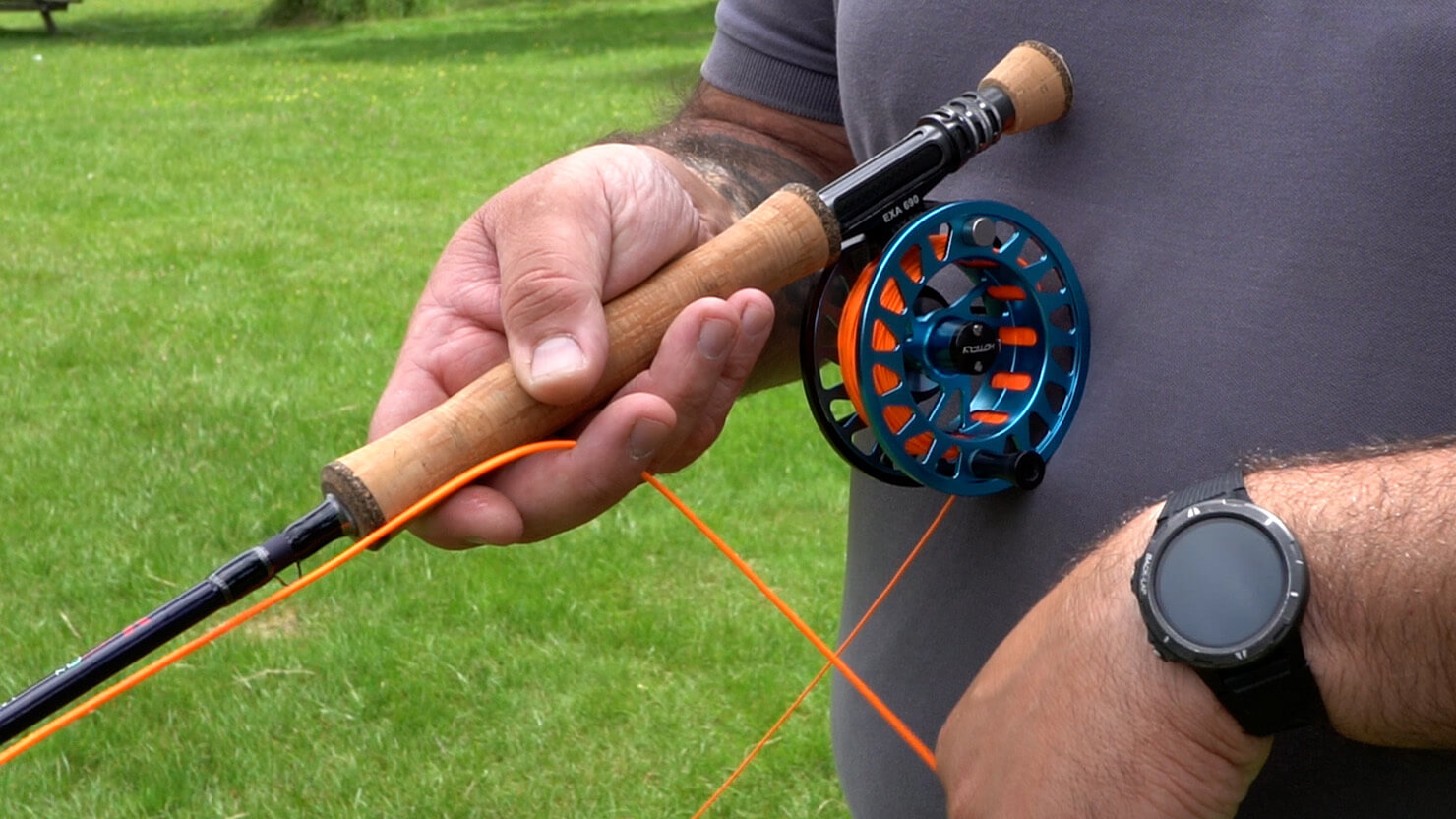
The three "essentials" of your equipment: fly rod, fly reel and fly line. It is important that all individual parts match with each other.
5.1. BEGINNER'S ROD & REEL COMBOS ARE OPTIMALLY MATCHED AND IDEAL TO START FLY FISHING
To make it as easy as possible for you to get started in fly fishing and to save you from making expensive mistakes, we have put together special beginner's combos in our online shop. Here, the individual components of the fishing equipment are optimally coordinated so that fly rod, fly reel and fly line match perfectly. This makes it easier for you to cast and guide your flies and you will have more fun fly fishing right from the start.
These are all first-class products that we also sell individually in our shop. So, you are not buying a cheat pack or the pig in a poke. The big advantage of buying a combo is that you save money compared to buying them individually. And best of all: our tackle combos come to your home already fully assembled. We have already spooled the fly reel with the matching backing and the fly line is already on the reel. Just add a suitable leader and your favourite fly and you're ready to go.
Besides the universal beginner's set for all those who want to start fly fishing, we have also put together special sets for certain fly-fishing techniques. You will find sets for Euro Nymphing as well as for fly fishing in Stillwater or for the Italian Casting Style.
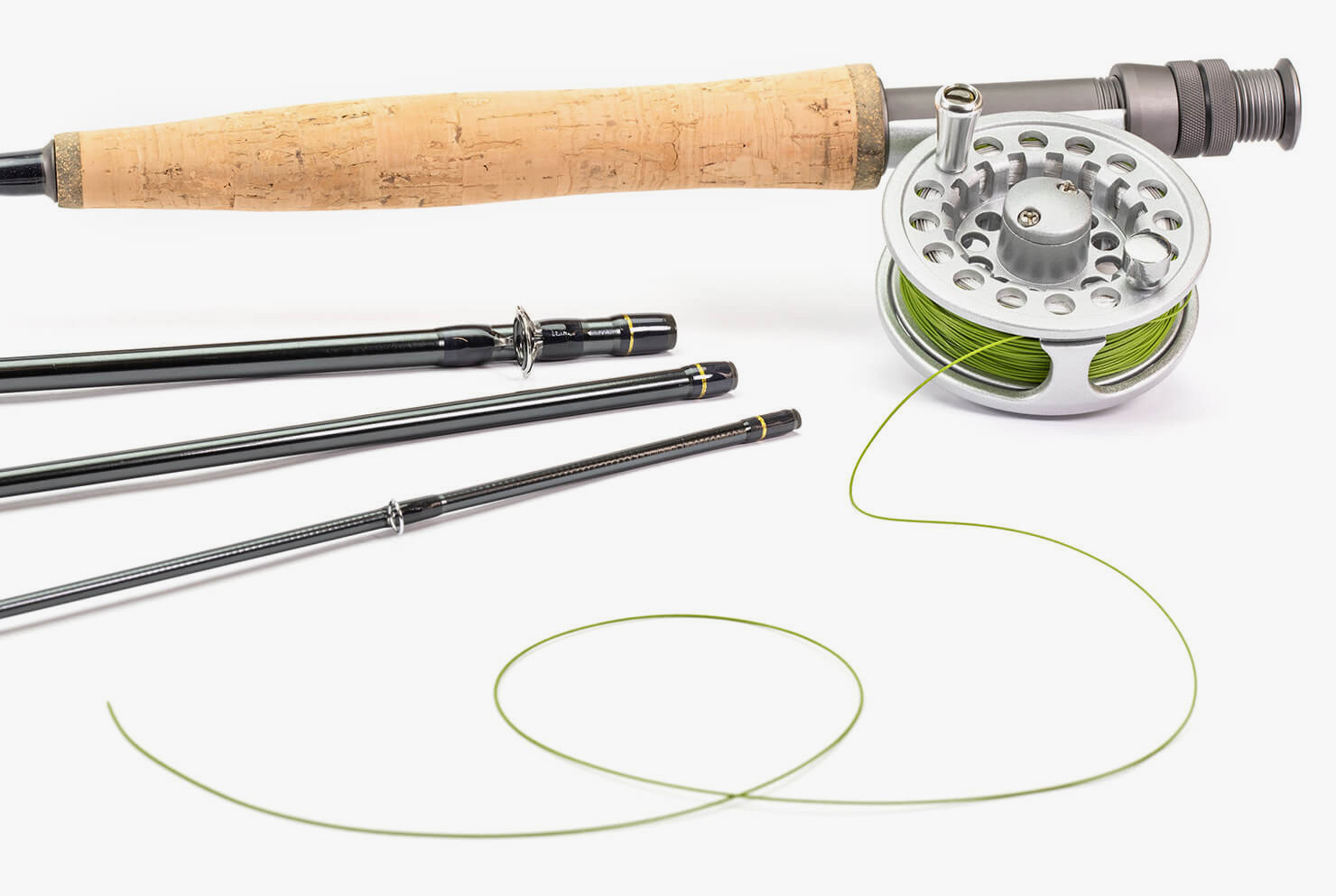
Our rod and reel combos with fly line are ideal for beginners.
5.2. PRACTICAL STARTER SETS FOR THE BEST FLIES AS WELL AS FOR WADERS & WADING SHOES
With our starter rod and reel combos you are well equipped for your new fly-fishing adventure. But you're still looking for the right flies to catch your first fish? To make it easier for you to choose from our huge range of flies, we have put together various fly selections for you. We have also grouped them according to various criteria, such as fly type, target fish or type of water. This way you can find the best fly patterns for your first trips to the water right away. Only tried and tested fly patterns are considered for the fly sets, which we also sell individually. But bought in a set, you not only have the certainty that you have the right flies for the respective situation. Compared to buying them individually, you also save money, and moreover the fly box is included.
A selection of proven and catchable flies can be especially helpful for beginners in fly fishing.
If you have finally caught fly fishing fever and you spend a lot of time on the water, sooner or later you will need high-quality wading equipment. That's why we've put together some great wading combos too. We have combined our best and best-selling waders and wading shoes, which we also use ourselves! As with the other combos, buying the waders in a kit is significantly cheaper than buying the individual products.
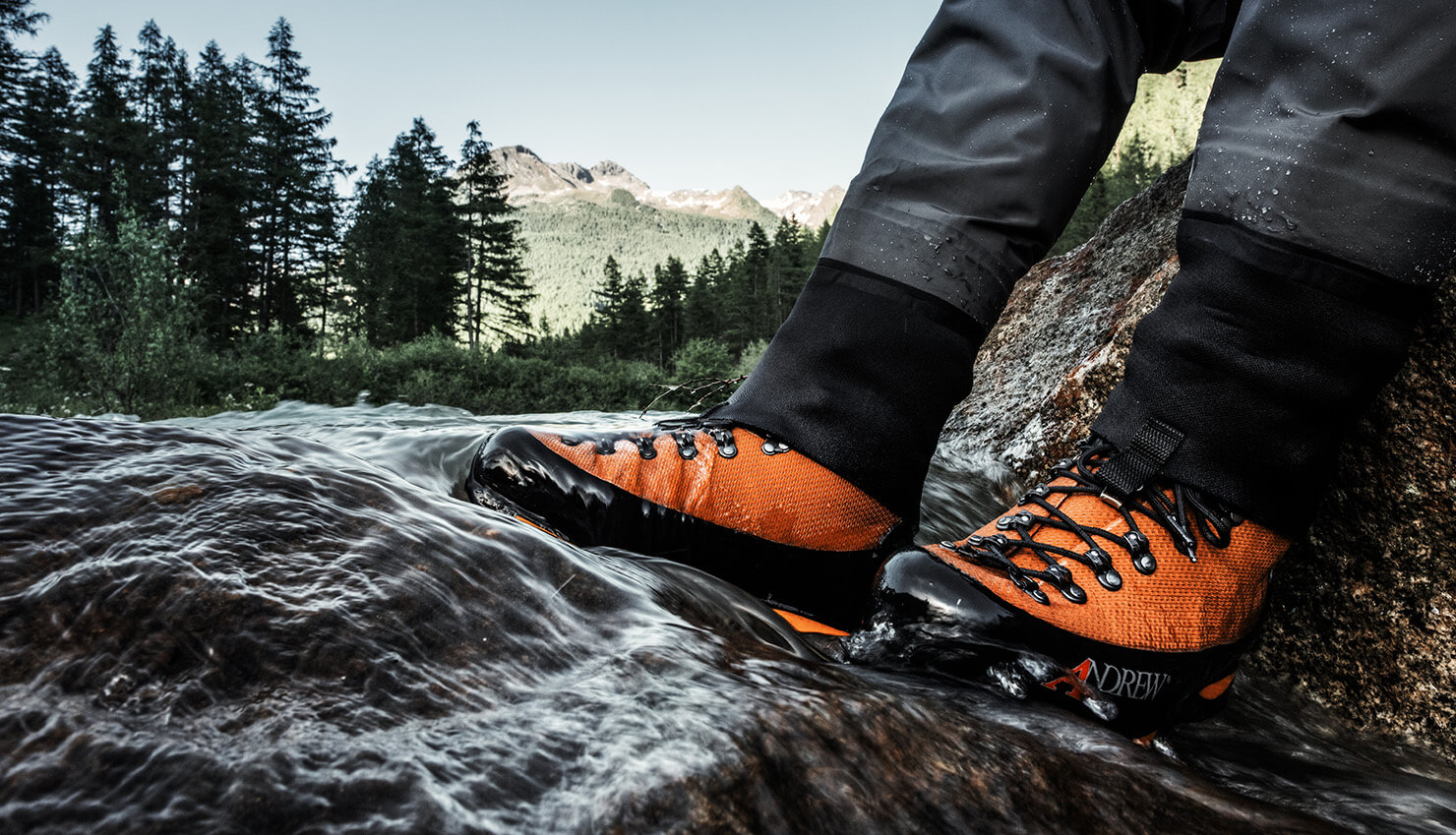
The waders and wading shoes of our wading combos are first class.
6. WE ARE HAPPY TO HELP
With this short introduction to the wonderful world of fly fishing, we would like to make fly fishing accessible to beginners. We have limited ourselves to what we consider to be the most important basics and have tried to keep the article as simple as possible. Of course, we are aware that we could not cover all aspects conclusively and go into all topics in detail. If you want to stay up to date on fly fishing, then subscribe to our newsletter. If you need further information or have specific questions, you can of course contact us. We will be happy to advise you without obligation.


